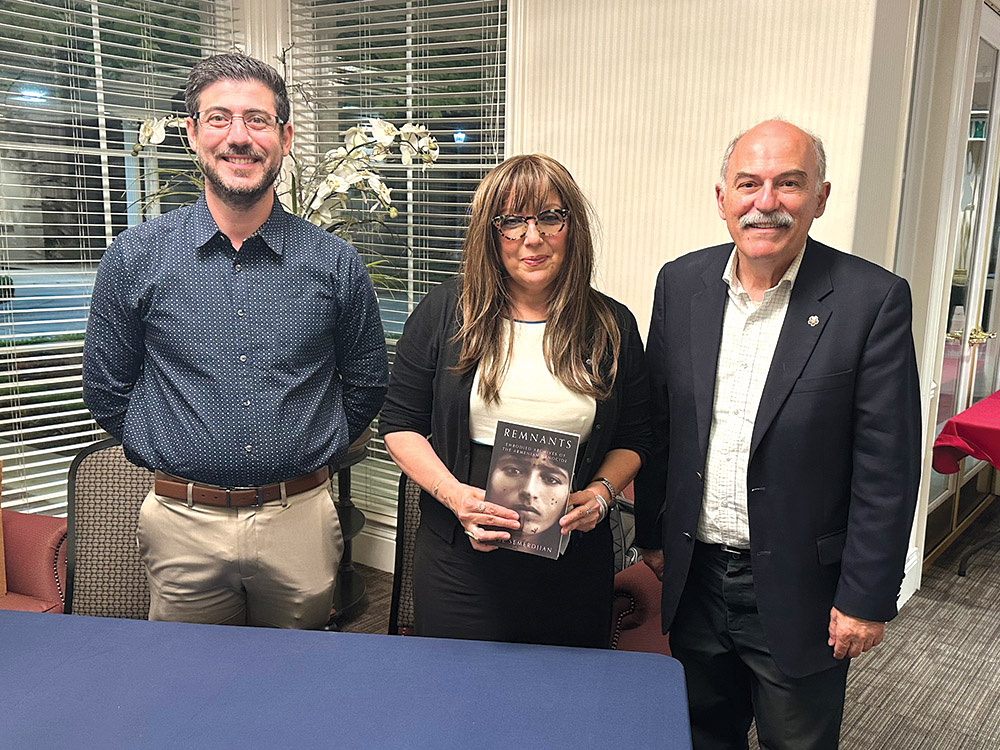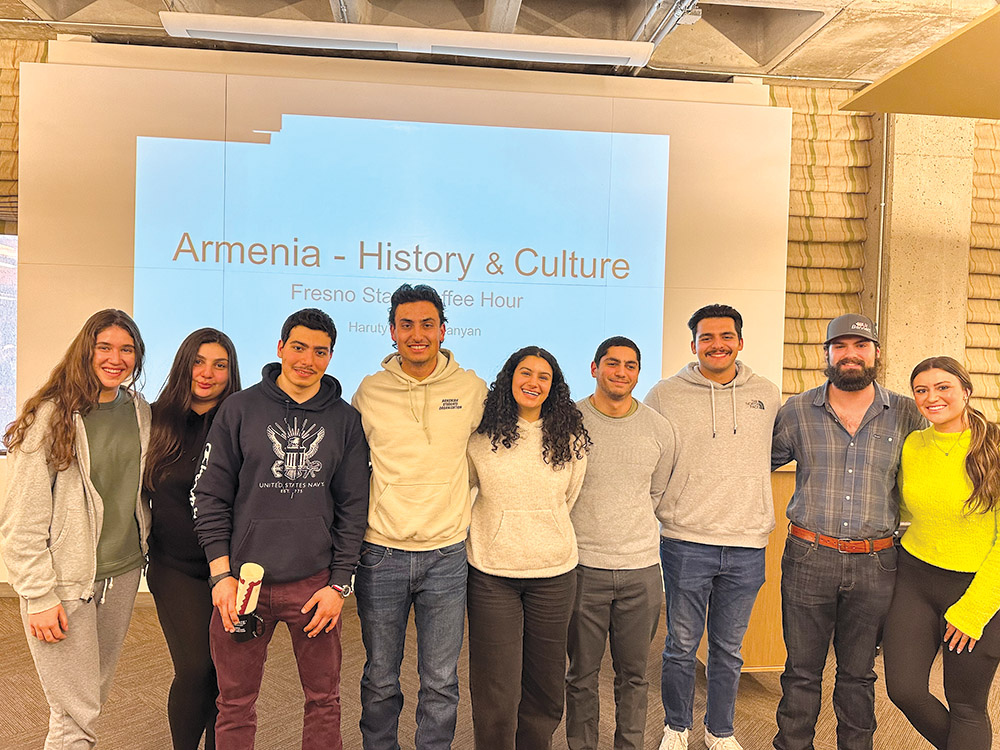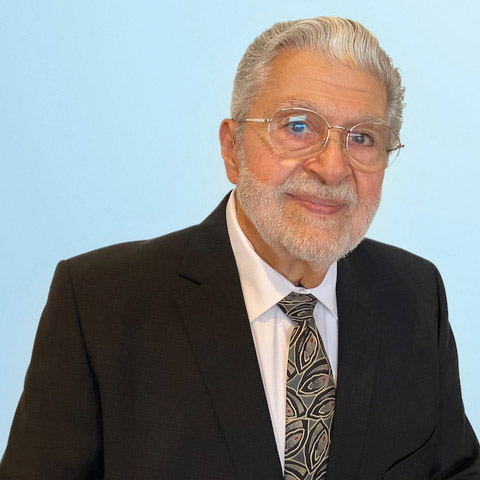“The moment in my life where I thought I did not know anything is the moment that I started learning… there is no learning if there is no listening.”
These words from musician Hachig Kazarian were his closing sentiments in his informative presentation on his recent book, Western Armenian Music: From Asia Minor to the United States (Armenian Series, Volume 18, 2023). There is truly no learning without listening, and his ideas expressed in the book highlight a new perspective on the topic of Western Armenian music.
Western Armenian Music highlights the music that was brought to America from Asia Minor and also Kazarian’s personal narrative as a music educator and a second-generation Armenian musician. Throughout his career, he has been instrumental in inspiring future generations of Armenian musicians and preserving traditional Western Armenian music in the diaspora.
Kazarian gave a lecture, “Western Armenian Music: An Artist’s Perspective,” which highlighted this topic to the nation-wide audience that participated via Zoom on Saturday, March 9, 2024. Kazarian’s lecture was organized by the Armenian Studies Program. The presentation focused on the significance of Western Armenian music and its evolution. Kazarian emphasized the importance of the preservation of the music, especially considering the effects of the Armenian Genocide on Armenian culture.
Hachig Kazarian was born to immigrant parents who survived the Armenian Genocide. He grew up in Detroit, Michigan, where he attended local public schools. Kazarian later attended Eastern Michigan University where he received an MA in music literature and ethnomusicology. Kazarian is a fixture in the world of Western Armenian music and is involved in many Armenian American organizations.
The majority of the presentation was about the importance in accurately transcribing the music in order to preserve Western Armenian music in its true form.
Kazarian utilized musical examples throughout the presentation, and the audience listened to original Armenian music and then how that music would be performed now. There are differences in the meter in which the music is played, emphasizing Kazarian’s point in the importance of transcription.
Kazarian creatively described old phonograph records as “time capsules of music capturing the heart and soul of the performer’s performance.”
These records are our most important sources of traditional Western Armenian music that has not been affected by incorrect transcriptions or interpretations. Listening to the songs helped the audience to understand the difference and the evolution of traditional Western Armenian music and what people consider now to be the traditional Armenian music.
Kazarian stated that Western Armenian music was largely neglected, due in part to the Armenian Genocide. He has worked to bring life back to Western Armenian music, especially in America. Kazarian stated that the neglect led to many “musical errors printed in the Armenian songbooks, as well as a lack of understanding and essence of Western Armenian music.”
Kazarian asserted the music should be remembered and transmitted properly for future generations.
According to Kazarian, there are many misconceptions about Western Armenian folk music and the style of music that needed to be changed.
For example, many songs were traditionally performed in a 10/8 meter folk style in Western Armenia, and are now played in 6/8 meter in America.
This may seem like a simple difference, but Kazarian noted that “rhythm is important to the study of Western Armenia music and should not be underestimated,” because accurate transcription is vital in the preservation of Western Armenian culture.
Kazarian’s book is available through Abril books: https://www.abrilbooks.com/western-armenian-music.html or the NAASR Bookstore: https://naasr.org/products/western-armenian-music-from-asia-minor-to-the-united-states?_pos=1&_sid=52a4f42e1&_ss=r.
Kazarian’s presentation can be viewed on the Armenian Studies Program YouTube channel, https://bit.ly/armenianstudiesyoutube.










